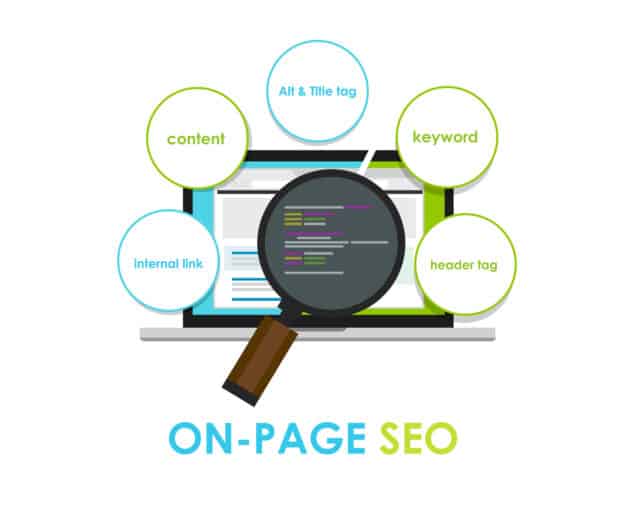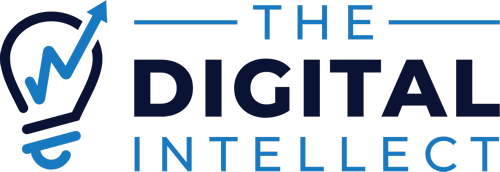What Is On-Page SEO?

Off-page SEO refers to optimizing for elements that are outside of the website. This can include social media mentions and backlinking. The elements of on-page SEO include:
- User experience (UX)
- On-page content
- URL optimization
- Internal links
- HTML code
- Title tags
- Images
Why Is On-Page SEO Important?
Google updates the algorithm regularly, improving the overall ability to understand user experience and user intent once a user lands on a page. For this reason, it’s essential to learn SEO and continue to keep up with ideal practices. Google views the page’s content to determine if it’s a relevant search query result.
A big part of this process includes searching for keywords. One of the most fundamental signals that information is relevant is when a webpage contains the same keywords as a search query. If specific keywords appear on the webpage, or if they appear in the body of the text or the headings, the information is more likely to be relevant.
In addition, Google prioritizes user experience, so it is essential to consider on-page SEO practices in your SEO strategy. Also, a well-optimized page will help Google understand what the overall content is about, which helps it rank your page and organize it better. In layman’s terms, you are helping Google do its job better.
Ultimately, Google is searching for the most relevant search result for a specific query, so the algorithm should also look for other relevant content on a page. Relevance is a huge part of on-page SEO so unless it is conquered, it’ll be more challenging to rank. According to Google, “The most basic signal that information is relevant is when content contains the same keywords as your search query.”
How To Create Content for On-Page SEO
Before planning on creating ‘technical’ optimizations such as keyword placement here and there, an individual needs to create content that Google wants to rank. To reach that, an individual will need the main target keyword. There are four things that a person needs to master to create content for on-page SEO.
- Be thorough
- Be clear
- Be unique
- Be relevant
Be Thorough
When there is content that aligns with search intent, you are off to a good start. You must deliver the promise to your audience to be deserving of first place on Google. If you have memorized the three C’s of search intent, you have a good idea of what people want to see.
Analyzing the three C’s gives an individual a high-level view of intent. To gain a better understanding of what content should be covered, it’s crucial to dig deeper by analyzing top-ranking pages further. The following ways are good methods how to be thorough.
Look For Common Subheadings
The majority of pages break a topic down into subtopics with subheadings. This offers rapid insights into what searchers are looking for, especially if you notice similar or the same subheadings across various pages.
Look For Subtopics Among Keyword Rankings
According to an Ahrefs study of three million search queries, the average top-ranking page ranks at about 1,000 other relevant keywords in the top 10. Many of these particular keywords will be considered other ways of searching for the same query.
Look At Your Pages Manually
Finding common keywords or subheadings is the quickest way to gain some insight into what to cover. It’s difficult to learn things this way. There isn’t a substitute for manually analyzing the pages to gain a more ideal sense of the topic.
Look At SERP Features
It goes beyond analyzing competing pages. It’s also important to learn how to check SERP features such as ‘People Also Ask’ boxes and featured snippets.
Be Clear
No matter how much your content might align with search intent or be extremely thorough, it won’t be read if it’s not clear. It’s ideal to follow these simple tips to create clear content that people will want to read.
- Use short sentences and paragraphs to avoid “walls of text”
- Write as you speak to make things more conventional and entertaining
- Use descriptive subheadings (H2-H6) for hierarchy
- Utilize a large font to help readers avoid eye strain
- Use simple words that everyone can understand
- Utilize images to break up the text
- Use bullets to help skimmers
The main goal is to make it as easy as possible for searchers to locate what they are searching for. If you’re able to cover everything individuals want to know on your page, but they aren’t able to find it, they will search for a more digestible page. It’s vital to utilize the inverted pyramid method, putting the need to know before the nice to know.
Be Unique
It’s crucial to give readers what they want, but it’s also necessary to bring something new to the table. If you are unable to achieve this, your content will be similar to everyone else. This guide can be utilized as a winning framework for content, but creativity should still be present.
Be Relevant
Relevance is arguably the most vital aspect of on-page SEO, which trickles down to aligning content with search intent. When you’re unable to give searchers what they want, the chances of ranking are slim to none. Google is considered the expert in understanding search intent, and the starting point is to analyze the current top-ranking results for search intent’s three C’s:
Content Angle
The content angle refers to the primary ‘selling point’. It’s not always clear-cut, but aim for the angle you feel will be most useful and appealing. Even though it’s essential to align content with what searchers expect, it’s not ideal to follow the crowd. If you are confident that you can gain a searcher’s attention with a different content format, angle, and type, go for it.
Content Format
Generally, the content format applies to blog posts, as they are typically listicles, opinion pieces, news articles, reviews, and how-tos.
Content Type
Usually, content type falls into one of five buckets: category, landing pages, videos, product, and blog posts.
How To Optimize Your Content for On-Page SEO
Creating content that searchers and Google want to view is hard work. After that process is completed, optimize the ‘technical’ stuff such as URLs and meta tags. This makes it extra clear to searchers and Google that your page is the best result.
On-page optimization focuses on SEO tactics that are in your control as in your site. There are numerous vital aspects of a comprehensive on-page SEO strategy. You’ll need to know how to create a site and content that ranks well in the SERPs that leads to higher conversion rates.
Include Your Keyword in the Title
Typically, page titles get wrapped up in the H1 tag. For this reason, it’s substantial to include the keyword in the title which has been traditional SEO wisdom for a while. Including the keyword in the title is considered second nature to SEO professionals.
Google’s John Mueller confirmed the significance of headings in 2020. “And when it comes to text on a page, a heading is a really strong signal telling us this part of the page is about this topic.” It’s also vital to understand that it’s not always sensible to utilize to exact keyword in the title, but more of a close variant of it. Lastly, it’s paramount to ensure that the titles sound natural, so utilize stop words and conjunctions whenever possible.
Use Descriptive and Short URLs
Descriptive and short URLs help readers understand what a page is about before clicking on it. When the page tells you what it’s about, it becomes more clickable and clearer. Keeping it short is vital because Google shortens long-lasting ones in the SERPs.
Optimize Your Title Tag
Having a captivating title tag is paramount because it appears in the search results. One of the simplest ways to create one is to set it up as a post or page title. However, there are times when it’s more sensible to switch up things.
Write An Engrossing Meta Description
Often, Google will show a page’s meta description as an illustrative snippet in the SERP. Even though meta descriptions aren’t a ranking factor, they are still important because a persuasive description can lead to more traffic and clicks. When writing a meta, it’s vital to do the following:
- Expand the title tag
- Match search intent
- Include the keyword
- Use active voice
- Be concise
Final Thoughts On On-Page SEO
In addition, use images because they can rank in Google image search and send more traffic your way. The purpose of alt text is to improve accessibility for the visitors who utilize screen readers. In the interim, it’s ideal to be concise, descriptive, accurate, and avoid keyword stuffing.
Lastly, link to relevant external and internal resources, which helps visitors navigate your website to find more information. Several other methods rank well and make a difference in on-page SEO strategy.
Improve Your SEO Strategy
Want to learn more about on-page SEO and how it can improve your overall strategy? Contact us today!



